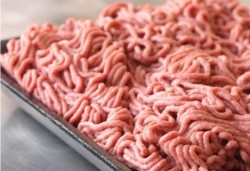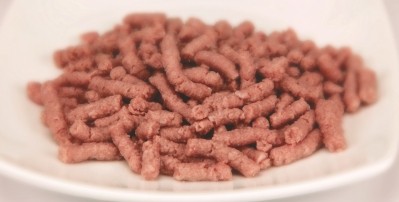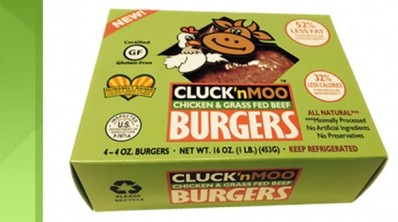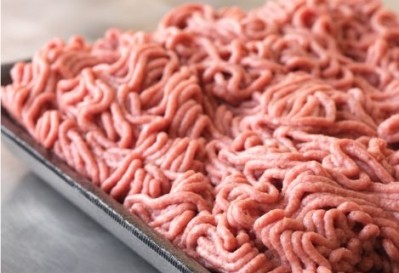Cargill: Production of finely textured beef still significantly below where it was before the ‘pink slime’ debaclé

Asked whether he thought production would return to pre-March 2012 levels, Cargill director of communications Michael Martin told FoodNavigator-USA: “While we believe there is a strong likelihood FTB will eventually be produced at the level it was at before March 2012, we cannot predict how long that will take.”
Given that the US beef cattle herd had “dropped to a number not seen since 1952” it was doubly frustrating that a safe, 100% beef product that could reduce waste, increase available lean beef, and keep prices down had been “vilified and demonized”, he said.
“While we understand the reason for our customers eliminating FTB from ground beef when their corporate brands were under fire... it is unfortunate that several-hundred-million-pounds of FTB, including our competitor’s similar product [Beef Products Inc’s lean finely textured beef], are now not being produced annually to feed people.”
He added: “It’s truly a shame that some media and the court of public opinion vilified and demonized beef by using a catchy moniker - ‘pink slime’ - which, as a descriptor, is completely inaccurate as FTB is not pink and not slimy.”
Pink slime attacks a contributing factor in decision to shutter plant in Plainview, Texas
It is well-known that the decision by leader food manufacturers, retailers and foodservice firms to drop FTB last spring as the 'pink slime' moniker gained momentum forced South Dakota-based Beef Products Inc (BPI) to shut down three of its plants and put more than 700 people out of work.
However, the attack on FTB was also a “contributing factor” in Cargill’s decision to shutter its beef processing plant at Plainview, Texas, on February 1, resulting in 2,000+ people losing their jobs, claimed Martin.
“The primary reason for idling the plant was drought-created cattle supply constraints throughout the region, although FTB was a valuable piece of the overall Plainview beef production. So, reduction of FTB production was an additional factor that led to the plant’s idling.”
ABC News: BPI is trying to inhibit free speech with defamation lawsuit

A civil lawsuit filed by former BPI employee Bruce M Smith last fall accusing Jamie Oliver; ABC News and blogger Bettina Siegel of willfully making false statements about lean FTB was dismissed on February 6.
Mr Smith said he was unable to comment on the case, but Martin Siegel - a Texas-based attorney representing Bettina Siegel - told us that “Mr. Smith chose to voluntarily dismiss the suit; it wasn't dismissed as a result of action by the court or a request or motion made by one or more of the defendants”.
However, a 263-page lawsuit filed by BPI accusing the same defendants of "false and misleading and defamatory" statements about FTB is still moving through the courts, with the two parties currently wrangling over whether it should be heard in federal or state court in South Dakota.
In a motion to dismiss the case filed on October 31, 2012, lawyers for ABC News said BPI was trying to inhibit free speech and challenge its right "to explore matters of obvious public interest, what is in the food we eat and how that food is labeled”.
BPI: ABC News repeated information it knew to be false
However, while some misinformation in the media can always be attributed to ignorance or lack of time, ABC News’ false statements about the source, nutritional profile and safety of LFTB were “not the product of merely negligent reporting”, claimed BPI in its complaint.
“It [the reporting] was based on knowing or reckless misstatements of facts… Defendants’ persistence—which included repeating the same misstatements after receiving information showing them to be false—indicates that Defendants intended to injure BPI and to create a consumer backlash against LFTB.”
The reporting went well beyond suggesting LFTB looked unpleasant, added BPI, citing a series of specific falsehoods it claims were repeated by ABC reporters after being told on multiple occasions that they were factually incorrect.
Specifically, ABC falsely stated that LFTB was “not really beef”, that it was a “filler” made from “waste,” “scraps,” or “low grade” beef trimmings or “connective tissues” that could be “contaminated with excrement” and were “once used only for dog food and cooking oil”.
How is LFTB produced?

In a detailed explanation of how it produces its USDA-approved LFTB, BPI explained that when carcasses are divided into prime cuts, smaller pieces of higher-fat muscle meat are cut off. These often contain a significant amount of lean beef that is too difficult to remove with a knife.
BPI has developed technology that mechanically separates the lean meat from the fat, enabling firms to significantly increase yields by producing an additional 10-20lbs of lean beef from every cow.
“Once they arrive at a BPI facility, the beef trimmings enter a de-sinewer in which cartilage, connective tissue, and other pieces that may incidentally accompany the trimmings are removed, leaving only the muscle tissue and fat…
"The trimmings are then put through centrifuges ….that remove virtually all of the fat from the beef trimmings, leaving beef that is typically 94-97% lean."
Finally, BPI introduces a small amount of ammonia gas to raise the pH of the lean meat and help remove potential pathogens, it said.
By contrast, Cargill uses citric acid, which is also approved by USDA (click here to watch Cargill's video explaining how it makes FTB).














